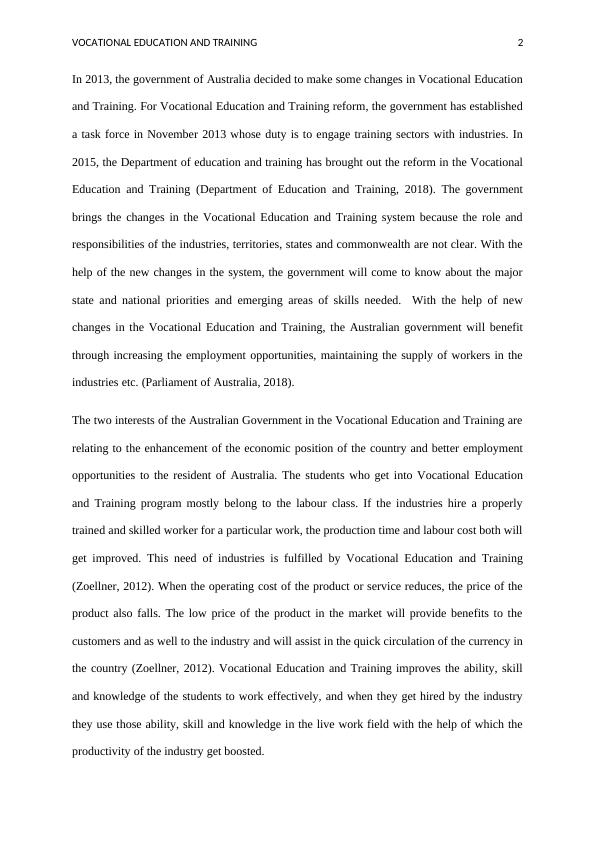Vocational Education and Training in Australia: Interests and Challenges
Discuss two interests that Australian Government have in the provision of Vocational Education Training (VET). Discuss two challenges that Australian Government face when engaging with the VET sector.
7 Pages1850 Words377 Views
Added on 2023-06-04
About This Document
This article discusses the interests and challenges of Vocational Education and Training in Australia. It covers the benefits of vocational training, the challenges faced by the government in providing it, and the reforms made to the system. The article also explores the role of funding and workplace learning in vocational training.
Vocational Education and Training in Australia: Interests and Challenges
Discuss two interests that Australian Government have in the provision of Vocational Education Training (VET). Discuss two challenges that Australian Government face when engaging with the VET sector.
Added on 2023-06-04
ShareRelated Documents
End of preview
Want to access all the pages? Upload your documents or become a member.
Educational Qualification Standard
|8
|1330
|20
Human Resource Development: Essay
|8
|1769
|91
Investing in Vocational Education and Training in Australia
|8
|1869
|57
AQF Leadership
|14
|2519
|20
History of Medical Education And Training
|12
|2424
|22
Reflective: Career Vision Project 2022
|12
|2971
|31



